Global experience. Рубрика в журнале - Economic and Social Changes: Facts, Trends, Forecast
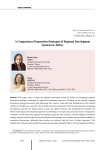
A comparison of innovation strategies of regional development agencies in Turkey
Статья научная
This paper aims to assess the regional innovation system of Turkey by comparing regional innovation strategies developed by regional development agencies. Focusing on the specific regional innovation strategy documents and addressing first, reports, researches and publications on the official websites of the agencies, and next, the in-depth interviews conducted with the representatives of regional development agencies by phone and/or e-mail, the paper examines and comparatively evaluates the efforts of the regional development agencies contributing to the regional innovation system. Comparative evaluation reveals that some regional development agencies have created a specific regional innovation strategy whereas the others have not yet developed such strategies, but conduct various studies on different innovation dimensions, although these studies are exclusive and far from a holistic approach. The comparative evaluation also reveals that regional innovation strategies differ in terms of regional priorities. Nevertheless, similar strategies developed by regional development agencies address the following issues: developing the research and innovation culture; research and innovation infrastructure; institutional structure; human resources; financial resources; effective communication, cooperation and coordination; entrepreneurship and innovation ecosystem; awareness of innovation activities; clusters; priority sectors; social innovation; intellectual property rights and commercialization. Although there are some efforts to improve the regional innovation systems by regional development agencies, the comparative evaluation demonstrates that they have not yet reached the desired level of producing a holistic regional innovation strategy and they should be more effective as a key actor in the regional innovation systems.
Бесплатно
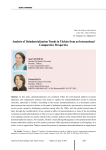
Analysis of deindustrialization trends in Turkiye from an international comparative perspective
Статья научная
In this study, deindustrialization was examined within the international political economy approach, and comparative analyzes were made to explain the deindustrialization trends in selected countries, especially in Turkiye. According to the results, deindustrialization, as a developed country phenomenon that started to decline at the peak of industrial productivity and caused an increase in the service sector, spread to developing countries mainly after the 1990s, with the global restructuring of labor through the neoliberalizm. It has created an effect of industrialization in some of the developing economies and deindustrialization in others. It can be argued that the global effects of deindustrialization in developing countries are closely related to the economic policies of the nations before they entered the deindustrialization process. For example, Turkiye’s main distinguishing aspect is the rapid transition from import substitution policies to a free market economy, while industrial development is still ongoing. As a result, it can be argued that Turkiye entered the process of premature deindustrialization in employment in terms of a direct transition from agriculture to the service sector and the inability of the service sector to absorb the labor force emerging from agriculture and industry, but this is a non-structural phase that can be overcome with alternative socioeconomic and spatial planning.
Бесплатно

Assessing the Impact of the COVID-19 Pandemic on the Economies of China and Russia
Статья научная
The COVID-19 pandemic has significantly affected economic development in countries around the world. It aggravated existing problems and increased the demand for economic transformation, modernization and qualitative development, triggered a new technological reform, which led to the emergence of new economic business forms and new consumption. The article assesses the impact of the COVID-19 pandemic on the economies of China and Russia. To achieve this goal, we review the state of business activity in the manufacturing and non-manufacturing sectors of the national economy, and summarize the main measures of the anti-pandemic policy implemented by the Chinese and Russian governments. We look into the dynamics of functioning of offline economic spheres that are aimed at personal communication (tourism, catering, retail, transport, culture, entertainment), as well as online spheres implying human-computer interaction (electronic retailing, express delivery, remote work, telemedicine) in the context of the COVID-19 pandemic. We make conclude that the extent of COVID-19 impact on the economy depends on the effectiveness of measures for its prevention and control. We are convinced that at the moment it is necessary to correlate these measures with economic and social development policies, and take into consideration increased consumption as an important aspect of mitigating the effects of COVID-19, accelerate the transformation and modernization of traditional industries, actively develop new economic business forms and build a more open monetary circulation both within the country and globally, thus enhancing the role of the state in global supply chains.
Бесплатно
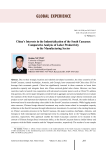
Статья научная
Due to their strategic location and relatively developed economies, the three countries of the South Caucasus, namely Azerbaijan, Armenia, and Georgia, have cooperated with China since 2015 to leverage their economic growth. China has significantly invested in these countries to boost their productive capacity and integrate them into China-centered global value chains. However, are these countries ready to launch into cooperation with advanced economic powers such as China? To address this question, the current paper integrates overall trends in aggregate and sectoral productivity to evaluate the readiness of the South Caucasus for a new phase of industrialization using Chinese investments and projects as new and important developments in the region’s economic life. Overall, the results indicate a downward trend in manufacturing value added in the South Caucasian economies. While lagging trends raise concerns, Chinese foreign directed investment may resolve issues related to incomplete capacity utilization in the South Caucasus through infrastructure investments. In contrast to the existing literature on China’s economic presence in the South Caucasus, this paper examines Azerbaijan, Armenia, and Georgia in both intraregional and interregional terms by comparing them to the Visegrad and Baltic countries, respectively. This approach enables the South Caucasian countries to be situated in the context of Chinese foreign direct investments influx, as the South Caucasus shares a similar history and prospects with the Baltic countries and the Visegrad countries, respectively. The results of a one-sample t-test indicate that, on average, capital deepening and aggregate labor productivity are higher in the South Caucasus than in the Visegrad and Baltic regions. However, manufacturing labor productivity was significantly lower in the South Caucasus than in the benchmark regions. Moreover, the estimated effect sizes at the sectoral level - as measured through eta squared - illustrated the strength of the obtained differences. These findings document the need for improved economic reforms and policies to keep pace with the regions that are driven by foreign direct investments and that have successfully integrated into global value chains. Otherwise, China-led economic development may fail to industrialize the South Caucasus, misguiding the respective parties’ beliefs and expectations. Thus, further research is needed alongside specific sectoral policy strategies to document country- or region-specific challenges related to the increase in Chinese projects and foreign direct investments in the South Caucasus.
Бесплатно
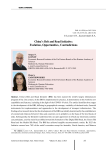
China’s Belt and Road Initiative: Evolution, opportunities, contradictions
Статья научная
China’s Belt and Road Initiative (BRI) has been named the world’s largest infrastructure program of the 21st century. As the BRI is implemented in practice, it demonstrates to the world its new capabilities and features, including in the light of the COVID-19 crisis. The article identifies three stages in the development of the BRI, differing in geographical coverage, variability of declared tasks, financial instruments for implementation and approaches to the development of transport infrastructure. The findings of our research show that the development of the BRI was initially determined by the establishment of commercial relations between China and countries on its periphery on the basis of five key blocks of tasks. Subsequently, the Initiative transformed into an open agreement in which any interested countries can participate, and the main focus shifted toward the formation of the Digital Silk Road, the Green Silk Road and the Health Silk Road. The BRI has achieved tangible macroeconomic results. By 2025 the Initiative covered over 70% of the world’s countries except for Australia, North America, and Western Europe. Reliable prerequisites have been created for the expansion of Chinese companies abroad, based on government financial support, significant production investments and the possibility of using improved infrastructure. Given its extensive geographical coverage and economic scale, the development of the BRI is an important event in shaping a new network of global transport corridors. However, the criteria for including infrastructure facilities in the list of projects under the BRI are still unclear. As for potential concerns of the countries involved in the Initiative, some of them include possible threats of an influx of labor from China, loss of control over strategic assets, use of less environmentally friendly technology, and increased financial dependence on China.
Бесплатно

Current problems of cooperation between Russian and Belarusian enterprises: region’s view
Статья научная
Under the unfavorable geopolitical situation, strengthening bilateral cooperation between Russia and the Republic of Belarus is of particular relevance. Currently, Russia is Belarus’ key trade partner. Despite serious challenges, sanctions and restrictions, Russian and Belarusian enterprises continue developing cooperation in almost all sectors of the national economy and achieving results. According to the results of the first 11 months of 2022, the historically maximum volume of mutual turnover of goods and services - 45 billion U.S. dollars - has been achieved. Analytical data and expert assessments show that the current environment makes it possible to intensify bilateral cooperation between enterprises of the two countries and bring it to a new level. On the other hand, as experts note, the existing situation may become a source of problems that hinder the potential of such cooperation. This condition determines the topic relevance and the purpose of the work. The research aims to identify the barriers to cooperation between the enterprises of Russia and the Republic of Belarus and develop proposals for their elimination. In order to achieve this goal, we have developed a toolkit, which was used to conduct an expert survey (indepth interview method) of managers of enterprises of Russia’s region (the Vologda Oblast), cooperating with counterparties from the Republic of Belarus. We carried out the selection of the expert group by means of the documentary method. The heads of six enterprises of the region, whose activities correlate with the structure of the volume of foreign trade turnover between the Vologda Oblast and the Republic of Belarus, took part in the survey. Approbation of the developed toolkit allows identifying certain problems arising in the course of bilateral cooperation: the problem of value added tax refund in the framework of foreign trade operations, the presence of customs restrictions, including on special-purpose products, the negative effects of economic sanctions and others.
Бесплатно

Статья научная
The transformations in the natural and socio-economic environment occurring in the Far North and the Arctic put forward the problem of regional sustainable development. This makes it necessary to address the task of finding strategic approaches to the management of the nonstandard Arctic region, considering the national interests of many states, including the Russian Federation, which dominates territorially in this region. Taking into account the size of the Arctic space and the extreme conditions of economic management, it seems relevant to comprehend the experience of international cooperation in the Arctic and analyze its use for socio-economic development in the entire Arctic region. The aim of the article is to analyze the current stage of international cooperation so as to find answers to the challenges of socio-economic development of the Arctic region. To achieve the goal, we have analyzed the state policy features of the Arctic states based on strategic planning, thus the northern states are able to adapt to the changing natural, socio-economic and geopolitical conditions. We considered approaches in the implementation of projects to develop mineral deposits on the continental shelf of the Arctic Ocean. With the support of international cooperation we give examples of nature management aimed at harmonization of economic interests of business entities and the need to preserve the environment quality in the Arctic. The scientific novelty consists in the critical analysis of the international cooperation features in the Arctic and its readiness to participate in overcoming the new challenges of the Arctic development. The practical relevance of the study lies in the fact that its findings can be used in the educational process in universities, as well as at the state level by executive and legislative authorities in the development and implementation of state policy in the Arctic zone of the Russian Federation, considering the features of international cooperation.
Бесплатно
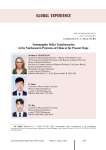
Demographic policy transformation in the northeastern provinces of China at the present stage
Статья научная
The Northeastern provinces of China are strategic territories from a geopolitical point of view; this fact determines the importance and relevance of studying their characteristic fertility trends and family planning directions. The demographic processes taking place here correspond to the general trends in China, but most indicators are lower than in other areas. The main objective of the study is to identify the features of demographic processes and directions of demographic policy implementation in the Northeastern provinces of China (Liaoning, Jilin, Heilongjiang) in the 21st century. The study is based on the analysis of the results of the National Population Census of the Republic of China (2000, 2010 and 2020) and legal documents regulating the policy of fertility and family planning. We show that the Northeastern provinces have a maximum proportion of families with one child, and the proportion of families with two children is two times lower than the average in China. The number of women of fertile age has decreased by a third, and the average age of women who have entered into their first marriage is increasing. We reveal that after the liberalization of the two-child policy in China, the family planning system includes previously used measures to support the elderly and families with one child, as well as new methods of birth support. Despite the formation of a unified national model of fertility support, the differences at the provincial level primarily relate to the remuneration and social security system of the population. Longer periods of maternity leave have been defined for the Northeastern provinces, and additional payments for the birth of children in border regions have been introduced.
Бесплатно
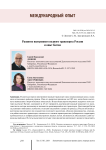
Development of inland waterway transport in Russia and the experience of China
Статья научная
In Soviet times, inland waterway transport played a decisive role in the exploration of the country’s remote areas. The year 1985 witnessed the peak of its development, when the world’s highest volume indicators were achieved. Currently, China is the world leader in this sector, having managed to transform inland waterway transport from an inconspicuous economic sector into a dynamically developing means of transport within 45 years. China’s achievements deserve attention, especially in terms of the scale and speed of the process. While Russia and China differ significantly in population density, production volumes, and seasonality of water transport, they have certain similar characteristics as well (vastness of territory, length and configuration of inland waterways, possibility to reach poorly developed areas). The article identifies four stages in the development of inland waterway transport, differing in goals, objectives, financing mechanisms and tools for the implementation of development goals set for a specific stage. It is shown that the development of inland waterway transport in the Russian Federation is determined by the complex economic and geographical characteristics of the country and by accumulated system-wide problems in the development of the sector. The latter include insufficient financing of inland waterways; shortage of modern vessels; low investment attractiveness and insufficient investment in the industry; poor interaction with other means of transport, which deprives inland waterway transport of part of the cargo base; shortage of modern transshipment complexes; outflow of skilled personnel from the industry. In order for the Russian inland waterway transport to regain its influence on the country’s territorial development, it is necessary to use China’s experience in organizing financing projects in this area, developing a training system, and combating interspecific competition in transport. Scientific significance of the study lies in the theoretical analysis and comparative assessment of the level of development of inland waterway transport in Russia and China. Proposals for addressing the accumulated problems of Russian river transport based on the use of China’s experience in promoting the activities of inland waterway transport are of practical importance.
Бесплатно
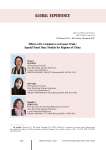
Effects of E-commerce on Export Trade: Spatial Panel Data Models for Regions of China
Статья научная
The primary goals of the paper are to examine the impact of e-commerce on export trade and to determine whether the level of e-commerce development has spatial spillover, siphoning, and threshold effects on export trade. The goals predetermined the choice of research methodology. This paper constructs the spatial lag model and threshold model based on the panel data of 31 China’s regions (provinces and other districts) from 2009 to 2022. The empirical results show a strong spatial autocorrelation and a robust spatial lag effect on the export trade in China. The improvement of the regional e-commerce level can directly promote the development of local export trade and has a significant positive spatial spillover effect, i.e., the improvement of the local e-commerce level can lead to the development of export trade in neighboring regions; there is no siphoning effect between provinces. According to the result of the threshold effect, there is a single-threshold effect of e-commerce on the impact of export trade, and the positive effect of different levels of e-commerce development on export trade is on an upward trend. The value of the research is a specific application of spatial regression modeling in empirical studies, and the findings provide insights for promoting the synergistic development of e-commerce and export trade
Бесплатно
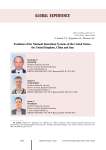
Статья научная
The concept of national innovation systems (NIS) involves consideration of the economic arrangements of individual countries. It is necessary to identify the features of institutions’ evolution that contribute to the processes of creating and transforming knowledge into new technologies and products. The article examines the experience of developing the NIS of the USA, the United Kingdom, China and Iran. The US and the UK have stable and developed NIS with a long history. Thus, Iran and China can be classified as countries with developing innovation systems but demonstrating considerable success. The significant difference between the considered innovation systems is how countries achieve political and economic sustainability. All of them are trying to stimulate market mechanisms for creating innovations. The Chinese innovation model combines the promotion of grassroots innovation and government support for technology enterprises. In the US and the UK, the leading role of business is associated with the perception that it is better at distributing investment in R&D than the Government. Iran is also trying to stimulate private innovation, but the Government still plays the key role because of the limited domestic market and sanctions restrictions. One of the prerequisites for the development of the NIS of Iran and China is a long-term policy in higher education, which, combined with population growth, has led to a significant expansion of access to higher education. The article is of interest to the Russian scientific community since the authors, on the one hand, explore the NIS of the leading countries in the field of innovation located on different continents (the UK, the US and China) and, on the other hand, a country that has been under sanctions pressure (Iran), which is especially important in the current economic and political realities. The authors suggest thinking about possible ways of developing the Russian innovation system by analyzing the foreign experience of the NIS. Scientists who are involved in researching NIS and national innovation policymakers can use the results of this scientific work.
Бесплатно

Статья научная
Social economy (SE) is an economic system that promotes sustainable and inclusive development and makes a relevant contribution with regards to the major challenges facing economies and societies. These are organizations with their triple differentiating characteristics: a) the pursuit of the collective interest of their members, b) the general economic and social welfare interest as they carry out economic and business activities for the market, and c) while meeting the needs of society, generating wealth and opportunities for development at individual and social level. Their primary purpose is social, thus its name, so the social economy enterprises (SEE) requires differential organizational and governance models based on specific values and operating principles. It is precisely this triple dimension and its differential characteristics that produce very positive socio-economic effects, recognized by the different international organizations, the countries and the European Union itself. In fact, the European Union envisages social economy entities as proactive actors in achieving what is known as the triple transition: social, environmental and digital. Recent crises, have led to a profound questioning of conventional growth and development strategies, and a reflection on the role social economy may play due to its double social and economic dimension and the positive impacts it generates, as analyzed in the article. Among others, employment is one of the most decisive mechanisms for a more just and cohesive society, where social economy has a very important role worldwide. So, the European Union Policy and its European Action Plan for Social Economy aim to increase the development of this business model, precisely in order to improve its impact on employment and social cohesion. The article reflects and analyses on these topics focusing on the transformative role of social economy as a key driver of a more just and cohesive society and the triple transition.
Бесплатно
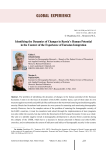
Статья научная
The problem of identifying the dynamics of changes in the human potential of the Eurasian Economic Union is in the focus of attention of the EAEU member states; each of them takes its own measures against economic and political risks and threats on the way toward ensuring national demographic security. Russia has formulated and operates its own systems for assessing and monitoring demographic security. However, due to the complex nature of the problem of ensuring the demographic security of the EAEU countries, it must be considered and solved through the implementation of state programs not only within the country, but also within the framework of the Eurasian Economic Union as a whole. Our aim is to identify negative trends in demographic development in all post-Soviet countries during the collapse of the USSR, which led to a decrease in human potential in Russia and other EAEU countries, and to substantiate the system of indicators and indices of demographic security in the context of Eurasian integration. We consider the resource opportunities that the EAEU countries obtain due to the functioning of a single integration association, and provide the overview of trends, problems and contradictions of integration processes. Based on the comparative analysis of the demographic situation in the EAEU member states, we can talk about the general indicators of crisis changes: a decrease in the birth rate, an increase in mortality, increased mobility of the population, although each country in these years was characterized by its own special dominants reflecting the demographic situation. Our systematic measurements of the dynamics of changes in Russia’s human potential in the context of integration processes, based on the idea of an empirical model of integration, planning and forecasting within the framework of the Eurasian Economic Union, allowed us to identify quantitative and qualitative signs of the functioning of the demographic development of the EAEU countries and develop a number of significant recommendations. The results of the study can be used in the development of the state policy of Russia and the EAEU countries in the field of ensuring the stability of demographic security in the conditions of integration.
Бесплатно

Impact of remittances on the trade balance in the countries of the South Asian region
Статья научная
The present study empirically examines the relationship between trade balance and remittances in five selected countries of the South Asian Association for Regional Cooperation (SAARC). Besides the joint impact of remittances on the trade balance, the individual impact of remittances on Bangladesh, India, Sri Lanka, Pakistan, and Nepal and comparison among these countries are also provided. To conduct this analysis, annual data of 20 years from 1991-2019 were collected from World Bank and Penn World database. Pooled OLS, random effect, and fixed models are used to estimate the joint impact of remittances. Further, dummy variable interaction models are used to estimate the individual impact of remittances on five South Asian countries. Our panel regression analysis confirms the increasing impact of remittances on the trade deficit of five South Asian countries by triggering import-led consumption expenditures. Other control variables, exchange rate, foreign direct investment, investment, and human capital have a significantly negative impact on the trade balance. On the other hand, rent has a significant positive impact on the trade balance of SAARC countries. Dummy variable interaction model confirms the negative impact of remittances on India, Nepal, and Pakistan, while remittances have an insignificant impact on Bangladesh and Sri Lanka. The paper provides various policy impactions for SAARC region.
Бесплатно
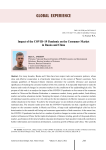
Impact of the COVID-19 pandemic on the consumer market in Russia and China
Статья научная
For many decades, Russia and China have been major trade and economic partners, whose close and effective cooperation is of particular importance in the context of Western sanctions. New strategic guidelines of Russian-Chinese relations determine the scientific relevance and practical significance of studying the consumer markets of the two countries. It is especially important to study the features and trends of changes in consumer markets in the conditions of the epidemiological crisis. The purpose of this work is to analyze the impact of the COVID-19 pandemic on four areas of the consumer market in China and the Russian Federation: e-commerce market, luxury goods market, food delivery market and online education market. Studying the impact of crisis processes on the consumer markets of individual countries seems to be very relevant for the development of effective measures to overcome similar situations in the future. To achieve the research goal, we use methods of analysis and synthesis of statistical data. The research results prove that the COVID-19 pandemic has had a significant negative impact on the consumer market in Russia and China. A large-scale epidemiological crisis has led to deterioration in the material well-being and consumer opportunities of both countries. At the same time, the COVID-19 pandemic has also led to a number of positive changes in certain sectors of the consumer market in Russia and China: further rapid development of distance trading, growth of the goods delivery market, acceleration of the trend of online education development. Such positive trends will contribute to further information and innovation development, economic growth of Russia and China. The scientific novelty of the research is to identify the consumer market areas that have felt the greatest impact of the pandemic in terms of accelerating their development, as well as a comparative analysis of these areas in cross-country comparison.
Бесплатно
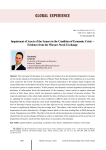
Статья научная
The main goal of this paper is to examine the impact of on the performed impairment of assets on the market valuation of companies listed on Warsaw Stock Exchange in the conditions of an economic crisis caused by the Covid-19 pandemic. The research undertaken in the project helps recognize the correct behaviour (in the short term) of the issuers' shares in a period of uncertainty and increased volatility of securities prices on capital markets. To this purpose, was adopted a research hypothesis indicating that disclosure of information about the impairment of the company's assets results in negative abnormal returns of their share prices, which was dominant position in the research of previous authors. The research undertaken in the article helps identify the rules of behaviour whether the reaction of investors on updating the company's assets in crisis conditions is different than in times of prosperity. The main hypothesis will be verified using the event study methodology. The author intends to verify whether the level of abnormal returns occurring on the days adjacent to the announcement regarding impairment of assets is significantly different from the average level. The subject of the article will be all reports on impairment of assets submitted by 140 biggest issuers listed on the main trading floor in WSE during the Covid-19 pandemic (year 2020). The effect of the article will be interpretation of certain relationships that characterize the stock exchange in Poland as well as an indication of the importance of the occurrence of impairment of issuers' assets for their share prices in economic crisis situation.
Бесплатно
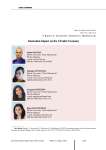
Innovation impact on the circular economy
Статья научная
The paper presents the arguments and counterarguments used in the scientific discussion on the issue of how innovations affect the circular economy and whether it changes accordingly. The main purpose is to analyze the extent to which EU member states manage to boost the circular economy through investment and employment. Review of literary sources and approaches for solving the problem of the multilateral and two-way impact of innovation on the circular economy indicates that the green economy could not exist without the development of innovation, but on the other hand they are its engine. Environmental practices show that there is a need to develop new business models taking into account functionally related innovative changes. The research methods and methodology covers the period from 2008 to 2018. The paper presents the results of an empirical analysis examining the extent to which EU member states manage to boost the circular economy through investment and employment, which showed that measures to increase their economic activity should be in line with the policy of attracting of investment in the circular economy. The research empirically confirms and proves that there still exist certain problems hindering the full implementation of the circular economy; and they are due to the consciousness of the population and employment opportunities in these areas, despite the efforts of the responsible institutions. The results of the research can be useful for public institutions dealing with the circular economy, as well as for the business sector.
Бесплатно
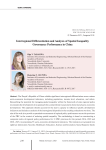
Interregional differentiation and analysis of spatial inequality governance performance in China
Статья научная
The People’s Republic of China exhibits significant interregional differentiation across various socio-economic development indicators, including population, income level, education, and others. Researching the potential for managing spatial inequality within the framework of state regional policy necessitates the development of an approach for a comprehensive assessment of provincial socio-economic development. This approach should account for the state’s capacity to influence specific development indicators and include an analysis of the interregional disparities in the resulting evaluations over time. The aim of the work is to provide a quantitative assessment of regional policy performance across the provinces of the PRC in the context of reducing spatial inequality. The methodology is based on constructing a composite index of regional policy performance for 31 PRC provinces for the periods 2016–2019 and 2020–2023, incorporating 55 socio-economic development indicators. The indicators are grouped into eight key dimensions: Security; Healthcare; Education, Science and Innovation; Social Support; Sports and Culture; Transport; Ecology; Economic Development. The empirical findings demonstrated that eastern and central Chinese provinces exhibit higher composite index values, reflecting stronger policy performance. The Gini coefficient for the composite index decreased to 0.4 compared to 0.426 in the 2016–2019 period, indicating a reduction in spatial inequality in China as a result of implemented regional policy measures. The leaders were most distinctly separated from the main group of provinces in the dimensions of Ecology; Education, Science and Innovation; Sports and Culture; and Healthcare. The dimensions of Social Support and Transport displayed a more balanced distribution of outcomes across the national territory. During the pandemic period, disparities in Economic Development; Sports and Culture; and Healthcare decreased significantly. The analysis reveals that the regional policy performance index tends to be higher in economically advanced provinces of China and lower in larger provinces. Involvement in national-level spatial integration projects also emerges as a critical success factor in improving policy performance. The obtained results contribute to a deeper understanding of existing differentiation in regional development in China and provide valuable insights for refining the strategic design of future regional policy, as well as for developing and implementing measures to balance the level of socio-economic development across its provinces
Бесплатно
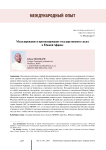
Modeling and forecasting public debt in South Africa
Статья научная
The principal interest of any developing country like South Africa is to preserve sustainable public debt. Recently, for developing economies there has been a growing concern regarding the importance of debt in setting the path for development and growth. The objective of this paper is to model and forecast total public debt in South Africa. Public debt in South Africa has grown substantially since the financial crisis in 2008 until now and it has not recovered. Debt is a crucial instrument for the small to medium economy such as South Africa and a vital source of fiscal policy. The study applied the ARIMA model to select the appropriate model to estimate and forecast public debt. As it is conventional for any time series modelling to assess the order of integration of the series used. The study employed the ADF unit root test to determine the order of integration and the results show that public debt variable is integrated of order one. The second step was to identify the best model to forecast public debt. In all the competing models the study identified that ARIMA13,1,1 was selected according to the coefficient significance and Akaike information criteria. The forecast shows that, there is an expected reduction in the stock of public debt in the future. It is therefore recommended by this study that fiscal policy makers should adopt a strong fiscal reform to keep the public debt to a minimum.
Бесплатно
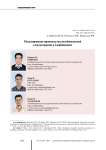
Modeling renewable electricity production in Azerbaijan
Статья научная
Azerbaijan is an oil-rich country in the South Caucasus with great potential for developing the renewable energy sector, which currently accounts for only a small share of total energy production. Increased electricity generation from renewables can bring various economic and environmental benefits, such as greater energy security, sustainability and resource conservation, decentralized power generation, technological innovation, and climate change mitigation. Although there are a growing number of studies on Azerbaijan’s green energy or energy transition, the dynamics of its relatively longitudinal per capita renewable electricity generation have not been fully explored. Moreover, most studies ignore the role of technological change and profound institutional and policy variables in the energy transition. Our study fills this gap by applying dynamic ordinary least squares modeling (DOLS) on annual data to identify the key economic, institutional, and policy determinants in the period from 1990 to 2021. We reveal that economic variables such as oil prices, trade openness, CO2 emissions, accession to the Kyoto Protocol, and crisis periods were positively and statistically significantly associated with renewable electricity production in Azerbaijan. However, institutional quality variables (e.g., government effectiveness), GDP per capita, and primary energy consumption were negatively and statistically significantly associated with renewable electricity. Our findings hold the potential to furnish essential insights into enhancing renewable energy production across both short- and long-term horizons. Consequently, policymakers, decision-makers, and scholars stand to gain valuable insights from the outcomes of our research.
Бесплатно

